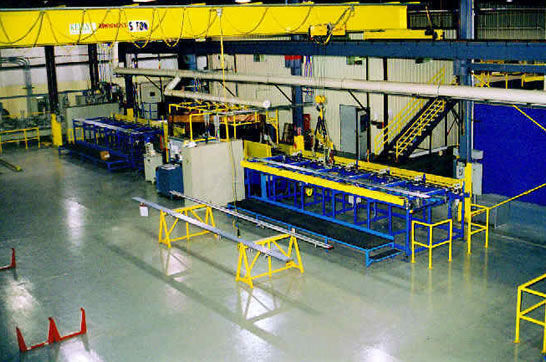The Purpose
 The two primary forms of chromium plating are decorative chrome and functional hard chrome. Decorative chrome plating is used in automotive trim, plumbing fixtures and hardware; decorative chrome is aesthetically attractive and is usually deposited over a layer of nickel plating to enhance corrosion resistance. Functional hard chrome plating is for industrial applications requiring a high degree of wear resistance (chrome plate has very high surface hardness) as well as good corrosion resistance. The high wear resistance of hard chrome makes it ideal for components that must withstand friction, abrasion and exposure to the elements. The two primary forms of chromium plating are decorative chrome and functional hard chrome. Decorative chrome plating is used in automotive trim, plumbing fixtures and hardware; decorative chrome is aesthetically attractive and is usually deposited over a layer of nickel plating to enhance corrosion resistance. Functional hard chrome plating is for industrial applications requiring a high degree of wear resistance (chrome plate has very high surface hardness) as well as good corrosion resistance. The high wear resistance of hard chrome makes it ideal for components that must withstand friction, abrasion and exposure to the elements.
For 80 years producers of hydraulic and pneumatic cylinders (also called actuators) have used the benefits of hard chrome plated piston rods to give their cylinders extended service life. Since the 1970’s these cylinder manufacturers have enjoyed cost savings by moving from individual piece – part plated components to machining piston rods from pre-plated long length steel bars. Depending on the size of the cylinder, the chrome plated piston rod will usually make up 15% to 30% of the total material cost of the cylinder. The high percentage input cost of this rod material forces the cylinder manufacturers to seek a balance of cost and quality and, based on Stelmi America’s unique manufacturing process, our chrome plated bar and tube products offer the market a new level of both superior performance and cost effectiveness.
The Stelmi process generates extremely high quality products and allows for superior environmental controls as well as requiring far less on-site chromium and a third less energy than traditional methods. The process offers significantly better dimensional uniformity and, in standardized testing, the products achieve over 500 hours of neutral salt spray corrosion resistance. This level of corrosion resistance is four times the industry norm and, along with the quality of surface finish, is a primary selling point in the industry.
Stelmi chrome plated bars have become recognized in the market for their surface quality and corrosion resistance, proven in field use, as well as, laboratory testing.
The Process
 Unique in our industry the Stelmi hard chromium plating process is a continuous horizontal feed operation that uses enclosed plating machines rather than open baths. An automated material handling system grips the bars, transfers the required electrical charge to each bar, and moves them through the plating machine. The steel bars are advanced and rotated, driven one by one, through the circular anodes immersed in the chromium solution. Ground and polished bars enter the machine from one side and exit, fully chrome plated, from the other. The bars are completely plated to the ends, contrary to any conventional plating processes. Unique in our industry the Stelmi hard chromium plating process is a continuous horizontal feed operation that uses enclosed plating machines rather than open baths. An automated material handling system grips the bars, transfers the required electrical charge to each bar, and moves them through the plating machine. The steel bars are advanced and rotated, driven one by one, through the circular anodes immersed in the chromium solution. Ground and polished bars enter the machine from one side and exit, fully chrome plated, from the other. The bars are completely plated to the ends, contrary to any conventional plating processes.
All conventional bar plating operations use stationary bars hung horizontally on a large frame or rack. The dipping rack carrying the bars is submerged in the bath and electrically energized. Traditional platers use stick type anodes that hang on both sides of the bars down the length of the tank. With straight anodes there is no way to create an electric field concentric to the round bars and this generates variation in the plate thickness down the length of the bar. Conventional plating methods also leave unplated areas on both ends of each bar and having fixed electrical contacts causes unwelcome heavy plate near the electrical contacts. None of these problems exist with the Stelmi process; the chromium plating is done with a series of circular anodes, and the bar advances and rotates through each anode, so that a completely homogeneous and dimensionally uniform chrome layer is assured.
The Stelmi plating process is completely enclosed and easily meets the most severe environmental or occupational control requirements. |
